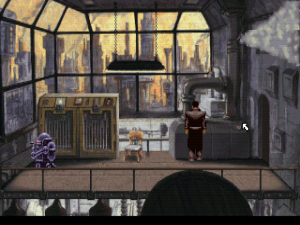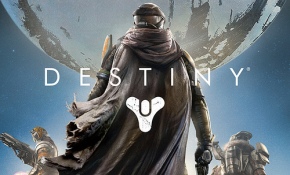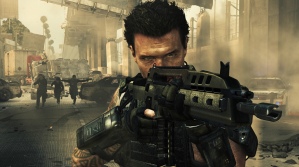
Steve Ince is one of the most prolific names in the videogames industry, having worked as a freelance writer and consultant game designer in a career spanning over twenty years.
Steve is renowned for his writing on the Broken Sword series, which he worked on at York-based company Revolutionary Software (originally based in Hull), and has written for a number of popular titles including The Witcher series and the So Blonde adventure titles.
You’re well known for your work as a writer in the industry. Was that where you started out?
“It’s funny because I kind of gave up the idea of writing years before joining the industry as the art side took over. I took my portfolio of work along to my first job and was asked to do a trial period an old 286 PC, which I’d not had much experience working on, and converting to Amiga graphics, too.
“I had to grapple with a lot of complex software during my early days, which was crazy but it was great fun. It taught me so much about the subtleties of animation, which I used to work on the background animation of Beneath a Steel Sky.”

Storytelling has lived on through the rise and fall of a number of technologies. Do you think the writing process for games has changed because of these technologies?
“Writing is about telling stories about characters and trying to find that human connection. People have been telling stories for thousands of years, and the core way that we tell stories hasn’t changed, just how we present these stories to the player.
“We’ve had a proliferation of platforms, all of which have given players different ways of connecting to a game and changed the way we interact with players, but the fundamentals of storytelling are still more or less the same.”

Some of the stories told in games could also be told in a different medium. What is it that makes yourself or others writers write these stories for video games?
“Different media have different approaches to storytelling and the way that they engage with their audience. I’ve written stories for comics, games and novels, and when you come up with an idea, you know where the best fit is.
“Of course, it’s never made up of just one thing. You’ve got a mixture of character and plot ideas, location concepts, and the basic storytelling components, so it’s about deciding where all of those would be best placed.”

Recently there’s been a big rise in interactive narratives, like those of Telltale Games, where player choice is important to changing the story. How much should changing the story be left in the hands of the player compared to those of the developer?
“Sometimes you have a very specific story that you want to tell, and so you might choose to give the player some agency for making decisions during the game and creating their own path, but ultimately there’s a goal that needs to be achieved when it comes to the story.
“The real strength of video games is that we have this potential to deliver stories that nobody else is doing, because there’s there’s no one way of doing it. Everything is different, and we should allow everything to be different.”

A lot of games allow players to customise their own character, for example, but these characters might have a pre-set backstory. How do you cope as a writer when faced with challenges such as this?
“As a writer, you need to write in a way that delivers the best and adapt accordingly. More emphasis might be placed in areas where the creative team has more control, such as world-building in RPGs, which explains the shallowness of characters in these types of games.
“Of course, this can go completely the other way, where too much emphasis is placed on discovering the backstory, something which is all too common in some recent games.”

How do you want the industry to respond to these and similar challenges, and where do you want to see the writer at the end of that?
“I think that we need to see more stories that don’t require violence. The violent games might have very engaging gameplay, but there are other ways to have engaging gameplay without rehashing some of the characteristics that have come in games before, particularly in the 90s.
“It’s a difficult position when you’re not getting millions in publisher funds, but you can easily explore stories on a budget of £100,000 and get real-world emotion and acting, like games such as Her Story have done with filmed footage.”
